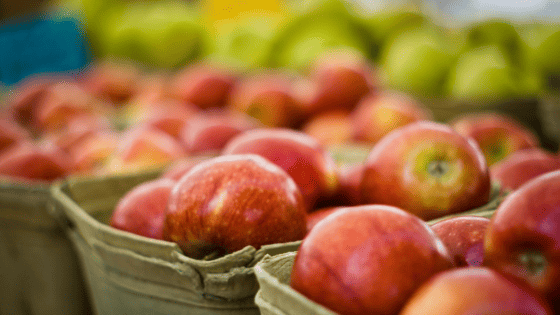Fruits That Start With K – With Descriptions
This list of fruits all start with the letter K.
They are mostly exotic and interesting variations for more well-known fruits. There is however some well known, like a Thai cooking favorite of Kaffir Lime, and the delicious Kiwis 🙂
Enjoy this comprehensive list:
List of Fruits That Start With K
Kabosu (Citrus sphaerocarpa): A Japanese citrus fruit that’s tart and often used as a substitute for vinegar or squeezed over grilled fish.
Kaffir Lime (Citrus hystrix): Recognized for its double leaves and rough, bumpy green fruit, its zest and juice are often used in Thai cuisine.
Kahikatea (Dacrycarpus dacrydioides): A New Zealand native producing small, sweet, red fruits.
Kaki (Diospyros kaki): Also known as the persimmon, it’s a sweet and sometimes astringent fruit depending on the variety and ripeness.
Kakrol (Momordica dioica): A type of spiny gourd commonly used in South Asian cuisine.
Kandis (Garcinia xanthochymus): A sour fruit, resembling a yellow mangosteen, often used in Malaysian dishes.
Kangaroo Apple (Solanum aviculare): Native to Australia, this small orange-red berry has a mild, tomato-like flavor.
Kapok (Ceiba pentandra): While its seeds are surrounded by a cotton-like substance used in pillows, the seeds themselves can be eaten when boiled.
Karanda (Carissa carandas): A berry-like fruit with a tart taste, often used in Indian pickles.
Karkalla (Carpobrotus rossii): An Australian native succulent plant with edible juicy fruits.
Kei Apple (Dovyalis caffra): A South African fruit with a tangy flavor and a yellow-orange hue.
Keriberry (Rubus rugosus var. thwaitsii): Resembling a blackberry, it’s juicy and mildly sweet.
Kerson Fruit (Muntingia calabura): Small, red berries that offer a sweet taste.
Ketembilla (Dovyalis hebecarpa): A purple-black fruit with a tart flavor, commonly used for jams.
Keule (Gomortega keule): Native to Chile, it’s a sweet fruit with a creamy texture.
Kiwi (Actinidia deliciosa): Furry on the outside and vibrant green inside, kiwis offer a tangy-sweet taste with tiny black seeds.
Kiwi Berry (Actinidia arguta): Much smaller than the common kiwi, it lacks the fuzzy skin and is eaten whole.
Kiwano (Cucumis metuliferus): Also known as horned melon, its jelly-like interior offers a mild, cucumber-like flavor.
Kizil (Lycium barbarum): Part of the goji berry family, these berries are sweet and are often dried before consumption.
Kiwifruit (Actinidia chinensis): Similar to kiwi but can come in a variety of colors and flavors.
Kokum (Garcinia indica): A deep purple fruit with a tangy flavor, often used in Indian cooking.
Korlan (Nephelium hypoleucum): Native to Southeast Asia, it’s a sour fruit often eaten fresh or used in dishes.
Kousa (Cornus kousa): Also known as kousa dogwood, the fruit is berry-like, with a sweet and creamy taste.
Krantz Aloe (Aloe arborescens): Its fruits are non-edible, but the gel inside its leaves is often consumed for health benefits.
Kudam Puli (Garcinia gummi-gutta): A fruit used in its dried form in many dishes in Kerala, India.
Kukum (Garcinia mangostana): Another name for the purple mangosteen, it’s juicy with a unique sweet-tart profile.
Kumquat (Fortunella): Tiny citrus fruits eaten whole, including the peel, offering a sweet-tart taste.
Kundong (Garcinia parvifolia): Found in Borneo, it’s a sweet-tasting fruit similar to the mangosteen.
Kurmala (Phyllanthus acidus): Known as Otaheite gooseberries, they’re sour and often used in pickles.
Kurrajong (Brachychiton populneus): Native to Australia, its seeds are roasted and eaten, while the fruit itself isn’t typically consumed.
For more lists of fruits, check out:
- Fruits That Start With A
- Fruits That Start With B
- Fruits That Start With C
- Fruits That Start With D
- Fruits That Start With E
- Fruits That Start With F
- Fruits That Start With G
- Fruits That Start With H
- Fruits That Start With I
- Fruits That Start With J
- Fruits That Start With K
- Fruits That Start With L
- Fruits That Start With M
- Fruits That Start With N
- Fruits That Start With O
- Fruits That Start With P
- Fruits That Start With Q
- Fruits That Start With R
- Fruits That Start With S
- Fruits That Start With T
- Fruits That Start With U
- Fruits That Start With V
- Fruits That Start With W
- Fruits That Start With X
- Fruits That Start With Y
- Fruits That Start With Z





